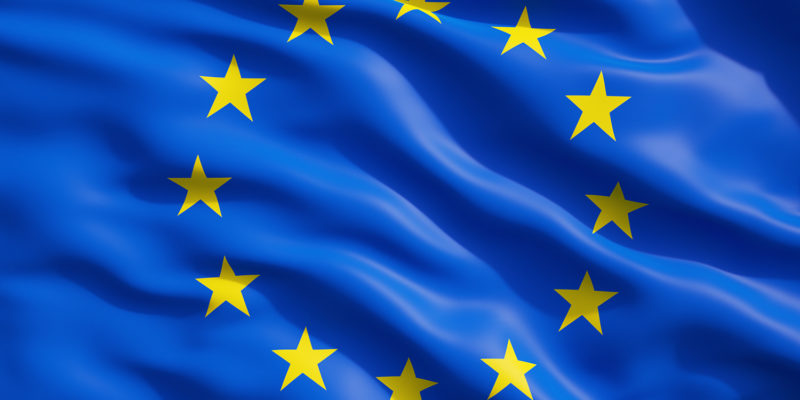EU’s List of Critical Medicines: Its Impact for API Manufacturers
The European Commission, the Heads of Medicines Agencies, and the European Medicines Agency have published the first version of the EU’s list of critical medicines for which the EU is prioritizing continuity of supply. What active pharmaceutical ingredients made the list, and what is the impact on API manufacturers?
EU’s list of critical medicines
This week (December 12, 2023), the European Commission (EC), the Heads of Medicines Agencies (HMA) and the European Medicines Agency published the first version of the European Union’s (EU) list of critical medicines. It contains more than 200 active substances of medicines for human use considered critical for healthcare systems across the EU/European Economic Area, for which continuity of supply is a priority and shortages should be avoided. In its release of December 12, 2023, the EMA said that the European medicines regulatory network will prioritize critical medicines for EU-wide actions to strengthen their supply chain.
“The list is an important tool to support the EU’s efforts in ensuring supply security and preventing shortages of critical medicines,” said the EMA in its December 12, 2023, release. “Inclusion in the list does not mean that the medicine is likely to experience a shortage in the near future. It means that the prevention of shortages is particularly important as a shortage could cause significant harm to patients and pose important challenges to health systems. A medicine is considered critical if it is used in serious diseases and cannot be easily replaced by other medicines, for example in case of a shortage. It is included in the Union list of critical medicines if it meets certain criteria, including being critical in more than one third of EU/EEA countries.”
The list contains active substances of innovator and generic drugs covering a wide range of therapeutic areas and includes vaccines and medicines for rare diseases. It reflects the outcome of the review of 600 active substances taken from six national lists of critical medicines . The list will be expanded in 2024 and will then be updated every year, according to the EMA.
The review was carried out with all EU member sates, and criticality was assigned based on an agreed methodology developed in consultation with key stakeholder groups, including patients’ and healthcare professionals’ organizations and industry associations. Medicinal product criticality was based on the following two criteria: the therapeutic indication of the medicine and the availability of appropriate alternatives. Medicines on the list can continue to be prescribed and used as usual by patients and healthcare professionals. Additional reporting requirements for marketing authorization holders and national competent authorities will be established and become effective once the EU’s proposed pharmaceutical legislation becomes applicable.
Critical medicines and the supply chain
Although the supply of all medicines is closely monitored so that relevant actions can be taken to guarantee their availability, medicines identified as critical for public health will receive particular attention. They will be prioritized for EU-wide policy measures to improve their security of supply, including recommendations for diversification of suppliers, stimulating production within the EU, or adhering to additional regulatory requirements or obligations. Other measures could include investment incentives and procurement approaches with more substantial contractual obligations for allocation and delivery.
The publication of the list will not impact existing or to-be-established national lists of critical medicines, according to the EMA. However, it will support the network’s efforts in drawing up national lists where these do not yet exist. In addition, it will support and expedite the European Commissions analysis of the supply chain of critical medicines to determine potential vulnerabilities, as announced by the European Commission’s Communication of October 24, 2023. In addition, the European Commission’s and the EMA’s Medicines Shortages Steering Group (MSSG) may propose measures to address vulnerabilities in the supply of those medicines, to ultimately prevent and mitigate shortages.
Measures that can be considered (as proposed in the European Commission’s Communication) include monitoring requirements, incentives to diversify and attract manufacturing investments in Europe, and procurement strategies to better support security of supply. There may also be requests for input into the assessment of the vulnerability of the supply chain, which is carried out by the European Commission. In its Communication, the European Commission said that “the delocalization of the manufacturing of active pharmaceutical ingredients (API) to a limited number of locations outside the EU has accentuated concerns about security of supply inside the EU. Addressing vulnerabilities in the supply chain of critical medicines is key as a springboard for enhanced resilience of EU healthcare systems.”
The European Commission in its October 2023 Communication also noted that regulatory flexibilities can be an important tool to manage and mitigate shortages of critical medicines. This includes measures to facilitate the quick authorization and rollout of alternatives; the upscaling of production or approval of alternative suppliers of raw materials or finished products; temporarily extending shelf-life; or measures to facilitate redistribution between EU member states. It noted that over recent years, EU regulators have gained experience with those flexibilities, especially during the COVID-19 pandemic.
The need to secure the supply of medicines across the EU and avoid shortages has been highlighted as a key priority in the EU Pharmaceutical Strategy for Europe, conclusions of the European Council, resolutions of the European Parliament, and the proposed revision of the EU pharmaceutical legislation. Once adopted, the legislation will provide further clarity on obligations and implications.
The proposed reform of the EU’s pharmaceutical legislation introduces structural measures to improve availability of medicines. Key elements include a new European alert system with earlier notification of shortages and withdrawals by companies, harmonized reporting criteria, mandatory shortage prevention plans and coordinated management of shortages by the EMA. The reform would reinforce and strengthen companies’ obligation to ensure appropriate and continued supply. In addition, the reform brings a major overhaul of the incentives provided to companies and would reward, for newly authorized medicines, continuous supply in sufficient quantity in all EU member states. Administrative burden has also been reduced, making the marketing authorization process faster and easier. The proposed reform would also facilitate earlier market entry of generic medicines, once the exclusivity period of the originator ends.
Other measures to address drug shortages
In addition, in October (October 2023), the EMA published details of the newly created solidarity mechanism developed by the EMA Medicines Shortages Steering Group (MSSG). This voluntary mechanism allows EU member states to support each other in the face of a critical medicine shortage. The solidarity mechanism, which is based on an informal setup during COVID-19, will enable any EU member state facing a critical shortage that has been escalated to the MSSG for coordination at the European level to request assistance from other EU member states in obtaining medicine stocks. This mechanism can only be used under very limited conditions and was developed as a last resort for EU member states after they have exhausted all other possibilities.
The solidarity mechanism complements a number of actions that the MSSG can carry out to address critical shortages in the EU. These are those as part of the MSSG Toolkit on recommendations on tackling shortages of medicinal products. The toolkit includes recommendations for monitoring supply and demand, an approach that was used to tackle the widespread critical shortages of antibiotics in the autumn and winter seasons of 2022 / 2023. The toolkit also provides guidance on interactions with marketing authorization holders and manufacturers to increase and redistribute existing stocks and the implementation of regulatory flexibilities, such as the exceptional supply of certain medicines that may not be authorized in a particular EU member state, or full or partial exemptions to certain labelling and packaging requirements for medicines.
The Critical Medicines Alliance and the supply chain
In its October 2023 Communication, the European Commission says that it intends to set up a “Critical Medicines Alliance” by early 2024. This would allow national authorities, industry, civil society representatives, the European Commission and EU agencies to come together to develop coordinated action at the EU level against the shortages of medicines, in compliance with the competition rules and EU’s international commitments. The starting point would be the shared vulnerability analysis of supply chain bottlenecks of the critical medicines on the its list of critical medicines (over-dependency on a limited number of external suppliers, limited diversification possibilities, limited production capacities). This evidence-based process would result in identifying a limited number of critical medicines with the highest risk of shortages and impact on healthcare systems. Through this process, the European Commission says the Critical Medicines Alliance would be able to identify the most appropriate tools to respond to these vulnerabilities in the most optimal way. This work could draw on a varied toolbox, including a set of actions to mitigate these structural risks, notably reinforcing supply by making demand more predictable, encouraging diversification and increased manufacturing for the most critical medicines, as well as EU stockpiling if needed.
The European Commission says that coordination at the EU level could offer a strategic frame to enhance security of supply of the identified critical medicines through public procurement. This could draw on the European Commission guidance and common criteria for the procurement of critical medicines, such as green production and prioritization of supplies in Europe at times of critical shortages. Such an approach could also help in defining adequate supply in relation to critical medicines and, thereby, compensate and incentivize industry, and support the application of these criteria in a coordinated way, at the EU level,” said the European Commission in its Communication. “Predictability of supply would also be helped by medium-term contractual incentives to diversify and attract the next generation of manufacturing investments in Europe. More generally, it would explore common approaches on how to encourage security of supply, on which EU member states could draw when taking forward joint procurements at the EU level.”
The European Commission says that the Critical Medicines Alliance could also help in exploring how to diversify global supply chains for critical medicines. Identifying priority countries for strategic partnerships with third countries (referring to countries outside the EU) concerning the security of supply of critical medicines would help coherence and potential synergies between EU member states’ and EU cooperation with third countries.
The European Commission says that another strategic focus of the Critical Medicines Alliance would be how to help to boost Europe’s capacity to produce and innovate in the manufacturing of critical medicines and ingredients in a coordinated and competitive way. This would enhance security of supply, strengthen availability, and reduce some of the EU’s supply-chain dependencies. The Alliance would coordinate efforts to identify security of supply needs for critical medicines, based on the identified vulnerabilities. In this context, the Services of General Economic Interest (SGEI), coordinated at the EU level and covering several criteria, including priority rated order for EU market, could be envisaged by EU member states to limit the risk of critical medicines shortages at the EU level. The Critical Medicines Alliance could play a role in promoting a harmonized approach across the EU.
Furthermore, the European Commission says that EU member states in the framework of the Critical Medicines Alliance could discuss whether to support the development of advanced and innovative green technologies, including for off-patent medicines production, possibly as part of a new Important Project of Common European Interest (IPCEI) focusing on critical medicines. It could complement the ongoing work of the existing IPCEI in the health area, which aims to support the development of innovative treatments on antimicrobial resistance, rare diseases and cancer, as well as innovative production processes and products. A new IPCEI could focus on developing innovative and sustainable manufacturing and production technologies and processes for generic medicines. “This would both enable to increase innovative domestic production and foster environmental standards,” said the European Commission in its October 2023 Communication. “It would also be an opportunity for the EU to lead in the greening of generic medicines production.”






